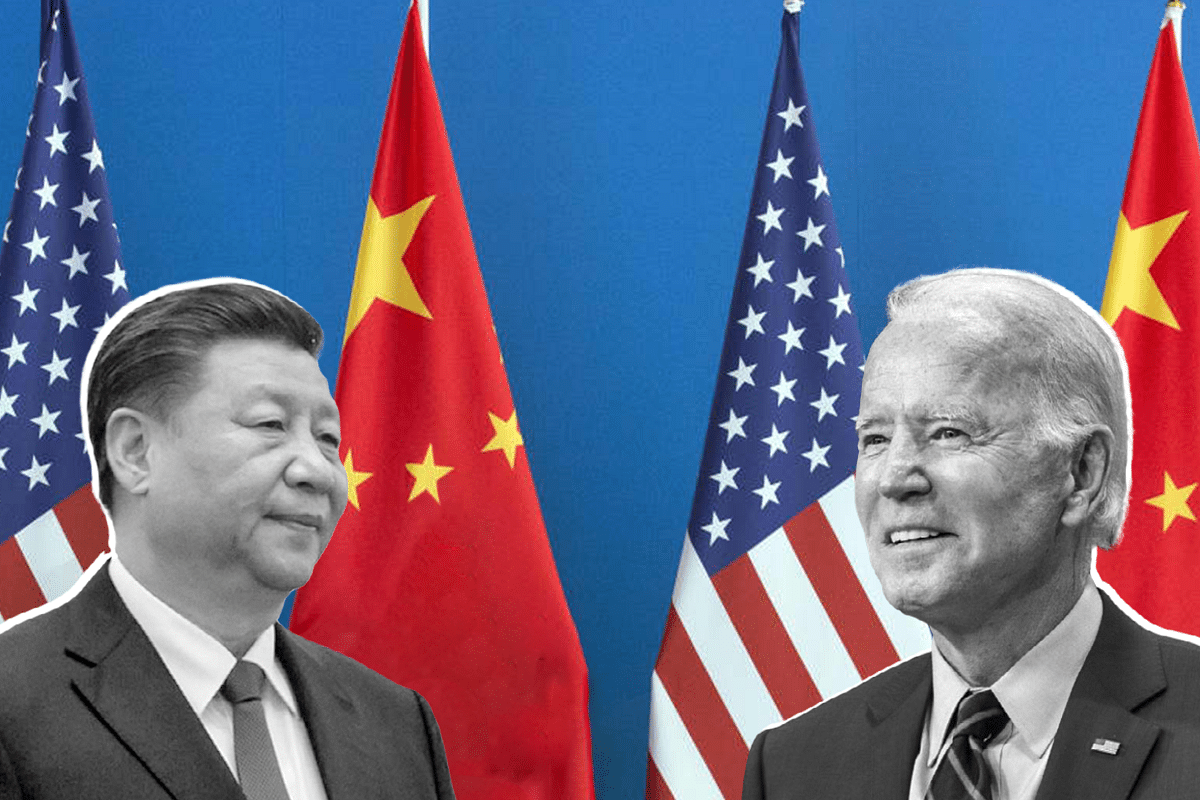World
US-China Tensions: CHIPS Act And Semiconductor Diplomacy
- The ushering of the CHIPS legislation is now intensifying the semiconductor diplomacy between America and China, leaving corporates with the hard decision to pick a side.

US President Joe Biden and his Chinese counterpart Xi Jinping.
Earlier this month, Intel began work on its $20 billion chip production complex in Ohio, less than a month after the United States CHIPS and Science Act was introduced.
Intel’s two new chip fabrication plants will cover around a thousand acres, located 50-odd kilometres from the Ohio capital.
The buck does not stop there. Intel is eyeing an investment of over $100 billion over the next decade, transforming the site into the world’s biggest semiconductor manufacturing hub, challenging both TSMC and Samsung.
The $280 billion CHIPS legislation comes with $52 billion for the semiconductor industry in America and also ushers $200 billion in scientific research in artificial intelligence, quantum computing, and other relevant technologies.
The $52 billion CHIPS funding subsidises companies building fabs or production plants within the United States. Also, it sets aside billions of dollars for building a semiconductor ecosystem with elaborate research and development facilities and a thriving workforce. Companies building fabs will also be eligible for tax credits.
Beyond the competition with China, CHIPS legislation had much to do with America wanting to secure its supply chains. In the early days of his regime, in February 2021, President Joe Biden signed an executive order directing the administration to address the worrying shortfall in semiconductor production that impacted operations at some auto plants.
In 2021, for the auto industry alone, the losses due to semiconductor shortages were more than $60 billion, as per some estimates.
The ushering of the CHIPS legislation is now intensifying the semiconductor diplomacy between America and China, leaving corporates with the hard decision to pick a side.
Even Apple, which prides itself on having balanced both the markets and political regimes, is now caught in the crossfire as the senators are now pushing the intelligence community to investigate the consequences of a deal between Apple and Yangtze Memory Technologies (YMTC), a Chinese chipmaker.
YMTC was to supply 3D Nand memory chips to Apple. The latter, however, is now looking to reassess the decision, given the pressure from the senators, and also citing YMTC’s closeness to the Chinese government.
As per some reports, YMTC is also a supplier to Huawei, thus further aggravating the concerns around privacy and security. It is also in violation of the US export control laws that bar companies with American technology to work with Huawei. Export-controls are also being exercised to slow down China’s AI push.
Nvidia and Advanced Micro Devices (AMD) have also been restricted by the White House, post-CHIPS legislation from supplying high-end graphics processors and AI chips essential for high-performance computing processes.
In early September, Nvidia confirmed that two of the high-performance AI chips and a computing system were restricted from exporting to China. AMD also halted exports of its high-powered GPUs to China. The move was significant, given China buys GPUs and AI chips in large quantities.
There is also the Chip-4 initiative that will test Japan, South Korea, and Taiwan, as the White House advances an alliance to stabilise and control semiconductor supply chains.
Focussed on the production of sophisticated semiconductors, the alliance aims to counter the threat to intellectual property by the Chinese, the control of supply chains, and moving production outside China.
However, for security and diplomacy reasons, to join the alliance would be a tricky choice for the other three partners.
Taiwan, to begin with, has security considerations to factor in, given the recent security drills by Beijing around the island. For South Korea, China is an indispensable partner, given Samsung and SK Hynix rely on that market.
Together, Hong Kong and China made up for 60 per cent of chip imports from South Korea in 2021. Even from a raw materials perspective, Japan and South Korean manufacturers need China, and therefore, this is where semiconductor diplomacy will be critical in the Asia-Pacific region.
The slowing Chinese economy is adding to the pressure for the private sector there, leaving room for only state-owned enterprises (SOEs) to expand.
As per a report, more than 3,400 companies in China, engaged in the business of chip manufacturing, have collapsed. Huawei, backed by Beijing, is already working on chip production supply chain minus the United States.
However, the decoupling of US-China on semiconductors is still a long shot, and therefore, for the corporates and other allies, managing and balancing the two powers would be the way forward.
Support Swarajya's 50 Ground Reports Project & Sponsor A Story
Every general election Swarajya does a 50 ground reports project.
Aimed only at serious readers and those who appreciate the nuances of political undercurrents, the project provides a sense of India's electoral landscape. As you know, these reports are produced after considerable investment of travel, time and effort on the ground.
This time too we've kicked off the project in style and have covered over 30 constituencies already. If you're someone who appreciates such work and have enjoyed our coverage please consider sponsoring a ground report for just Rs 2999 to Rs 19,999 - it goes a long way in helping us produce more quality reportage.
You can also back this project by becoming a subscriber for as little as Rs 999 - so do click on this links and choose a plan that suits you and back us.
Click below to contribute.
Latest